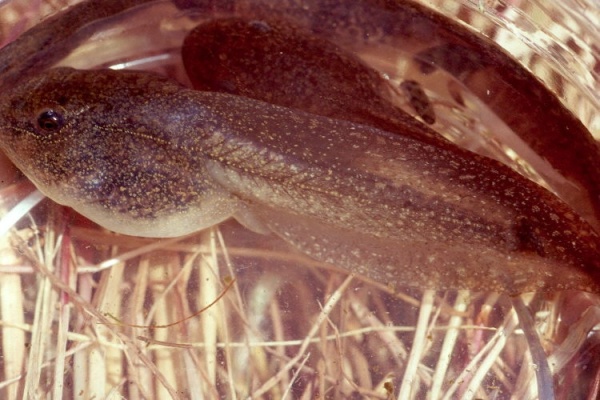Herpetologists are rubbing their eyes in disbelief, but a small population of California red-legged frogs is hopping around the Simi Hills area, adjacent to the Santa Monica Mountains. These amphibians, the largest native frog in the Western United States, haven’t been seen in the neighborhood in four decades.

According to the National Park Service about 100 of the hoppers were discovered in the Upper Las Virgenes Canyon Open Space Preserve; typically, most red-legged frogs are found in Central and Northern California. This SoCal stronghold is being closely watched by biologists who are planning on how to safeguard this isolated population and spread their range.
This particular species of frog is fighting for survival against some pretty big contenders, hunted for food, loss of habitat and non-native bullfrogs encroaching on their turf. Recently, the U.S. Fish and Wildlife Service agreed to evaluate six wildly used pesticides which, according to the Center for Biological Diversity, is contributing to the die-off of red-legged frogs, especially in Northern California.
As if that wasn’t enough, some confused red-leggers have been observed attempting to mate with young bullfrogs which could mess up the species as a whole.
Biologists want to transplant some frog eggs into areas of the Santa Monica Mountains that contain year-round deep pools of water, something that, given this year’s dry winter prediction, may be difficult to pinpoint.
Pools in the area are also home to non-native crawfish which have an enormous appetite; crayfish have already decimated the California newt population and have gobbled up insects, fish and well anything it can find. Crayfish were originally brought into the area as live bait by recreational fishermen.
The Mountains Restoration Trust coordinates the current “Bring Back the Steams” program where volunteers remove crayfish from the Malibu Creek watershed; it’s estimated that 30,000 of the little swimmers have been captured since the program began in 2011. The captured crayfish are frozen and then donated to the California Wildlife Center which uses them as food for their omnivorous patients. (The MTR volunteers catch crayfish in Malibu Creek on Thursdays, Fridays and Saturdays from 9:30-11 a.m. Click here to learn how to help.)
While crayfish are plentiful, there are creeks were they aren’t found, and these watery holes would make perfect red-legged frog incubators.
Currently, biologists from a consortium of agencies and groups are planning as early as this February to transfer frog eggs to their new potential homes in Ramirez and Solstic canyons which was part of the red leggers’ historic range. Eggs will be placed in mesh containers in a stream near the water surface. (Hiker: take note!)
If all goes well, biologists will return in the summer and release hundreds of tadpoles…and then…let the hopping begin….

